The ancient Roman Empire was a marvel of engineering and design, with a vast network of roads that connected cities and military bases, facilitated trade and commerce, and solidified Roman rule across conquered lands. One such land was Britain, where the legacy of the Roman roads of England can still be seen and felt today.
Why did the Romans go to such lengths to build roads in a foreign land? What motivated them and what can we learn from it? This article tells the fascinating story of the Roman roads of England and the reasons behind their construction. And it sheds light on a pivotal period in the country’s past.
Get ready to travel back in time to a world of conquest, commerce, and engineering mastery. And join us as we unravel the mysteries of Romans building roads and the Roman roads of England.
Roman Invasion of Britain
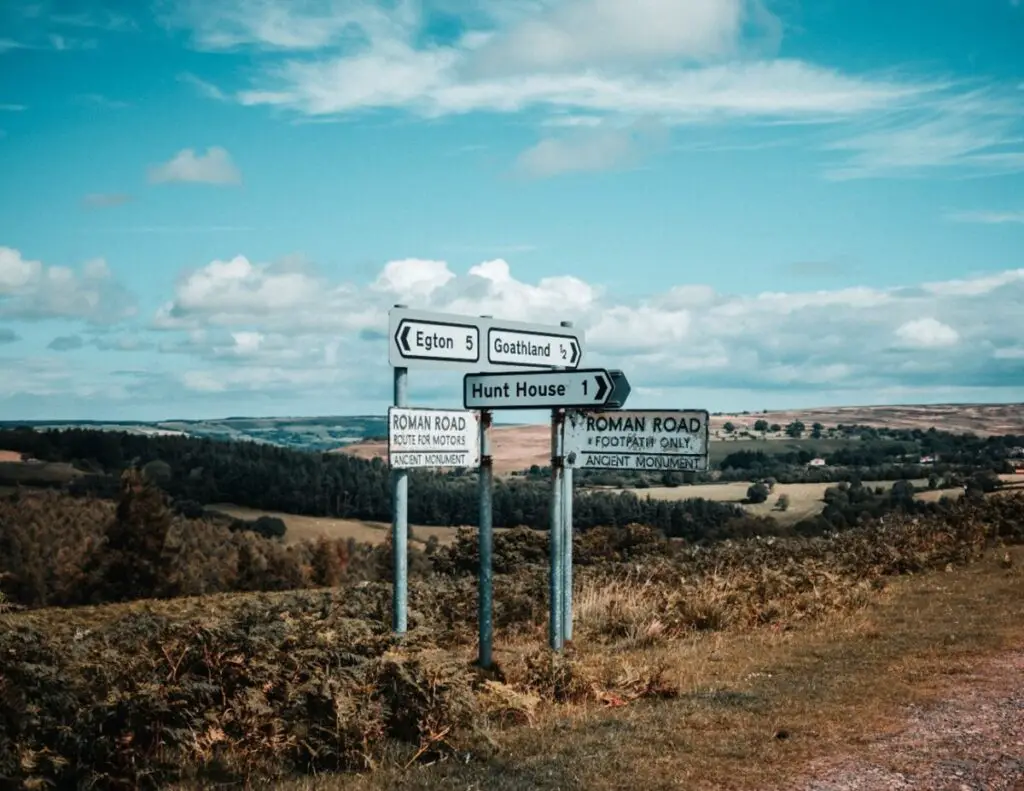
Before the Romans landed on British shores 2,000 years ago, the island was inhabited by large independent Celtic tribes ruled by powerful kings and queens. These tribes lived as farmers in settlements made up of round houses with straw roofs. There were no main roads because there were no towns that needed connecting.
The Britain we see today owes much of its language (including its name), architecture, food, and even its road system to the Roman invasion.
The Invasions of Julius Caesar
In 55 BCE and again in 54 BCE, Julius Caesar, the famous Roman general and statesman, led expeditions to Britain, making him the first Roman to attempt to invade the island. The Roman Empire was at the height of its power and expanding its territory was its prime objective. Conquered lands brought much-needed money, slaves, minerals, and other natural resources to its ever-growing populations.
However, Caesar’s attempts to conquer Britain were met with limited success. Despite arriving with a large and well-equipped army, he encountered many difficulties, the greatest being the fierce and tenacious Celtic tribes that were committed to driving the Romans out.
Although these campaigns did not result in conquest, the Romans gained valuable information about the tribes and created diplomatic and trading connections with them. And more importantly, it provided them with a knowledge of southern Britain’s resources, geography, and potential value to Rome.
The Invasion of Emperor Claudius
In 43 CE, the Roman emperor Claudius sent General Aulus Plautius to lead the invasion that would mark the beginning of almost four centuries of Roman rule in Britain.
Plautius and his 40,000 troops arrived in Britain only to encounter resistant opposition from warriors. But despite their bravery and knowledge of the land, the Celts were no match for the mighty Roman army. Plautius divided and conquered the British tribes, using a combination of military force and diplomacy to win over some and defeat others.
Over the next 45 years, the Romans gradually expanded into most of present-day England and Wales and called the new province Britannia.
The Colonisation of Britain by the Roman Empire.
The colonisation of Britain by the Roman Empire was swift. By 85 CE, Rome had dug its sandaled heels into most of Britain, and it was largely due to their well-established network of roads and forts. The Roman roads of England allowed troops to easily access supplies throughout the province and thus enabled swift travel between the forts. And it was the forts that provided protection for their troops, establishing a strong military and administrative presence.
The Importance of Romans Building Roads
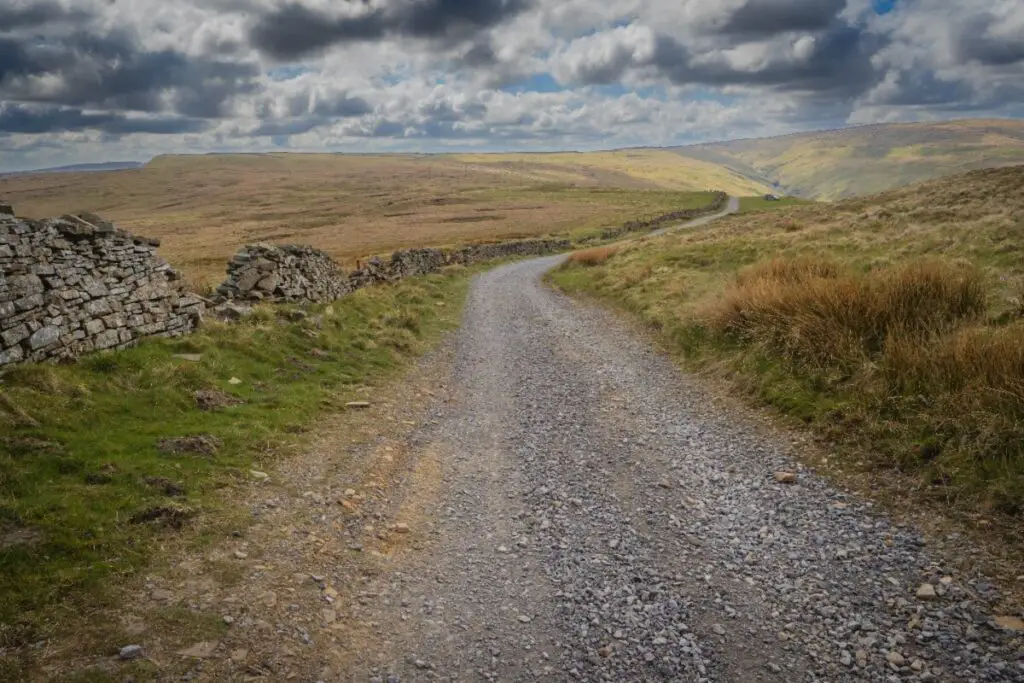
Almost immediately, the Romans started building roads, because they knew roads were essential for them to be successful in conquering the island. The marshy geography and wet climate made the deployment of legions and heavy-wheeled vehicles virtually impossible. But paved roads provided a solution.
Roman Roads Connected Cities and Military Bases.
The Romans built roughly 3,200km (2,000 miles) of paved roads to connect towns, cities, and military bases. Thousands more minor roads, usually surfaced with gravel, covered the land from the south coast of England all the way up to Scotland. Estimates indicate the Romans constructed some 16,000km (10,000 miles) of roads in total between 43 CE and 150 CE. It was an impressive network which they maintained well throughout the occupation of Britannia.
Roads Strengthened the Roman Empire’s Hold on Britain.
The Romans could not have conquered Britain without their roads. The roads of England facilitated communication between bases. They delivered messages and military dispatches quickly when they were faced with the threat of uprisings and rebellions. The troops were able to respond immediately and move swiftly to places of unrest, allowing the Romans to maintain control over the local populations. With their extraordinary engineering technology, roads helped the Romans project a powerful image of supremacy and hegemony.
Romans Building Roads Facilitated Trade and Commerce
The Romans had to consider many factors before they committed the time, energy, and resources needed to build a road. It was important to establish access to areas that were not yet fully subjugated. But it was also necessary to take into account the location of mines where potential mineral wealth could be extracted. Minerals such as iron, lead, tin, copper, and gold were extremely valuable to Rome.
Additionally, these minerals helped to stimulate economic growth within the new province and were used to trade and negotiate with locals. Roads were needed to connect these mines to the ports as well as move goods around the province.
Building the Roman Roads of England
In order to build the Roman roads of England the Romans had to decide what areas needed connecting. And it was the engineers who chose the best route to lay the road. Surveyors preferred high ground where the land was drier and there was less likelihood of ambush. Construction depended on what materials were available in the area, and how accessible they were.
The Engineering Techniques Used to Construct Roman roads.
Initially the Roman army was assigned to build the roads. They followed the tried and tested engineering techniques that had been applied in road building throughout the empire.
- First, they dug shallow ditches on either side of the road.
- Then they used the soil from the ditches to create a mound in the centre of the road, called an agger.
- They layered larger stones followed by smaller stones on top of the agger.
- To make the road more durable, builders laid lime and iron slag cement with paving stones on top to create a flat smooth surface.
- If the land was particularly soft or marshy, they built roads on piles of timber or brushwood before laying the stones.
- Main roads were between 5-10 metres wide to allow wagons and carriages to pass each other.
- They built gravel pathways for pedestrians between the agger and the ditches.
Length and Complexity of Roman Road Networks.
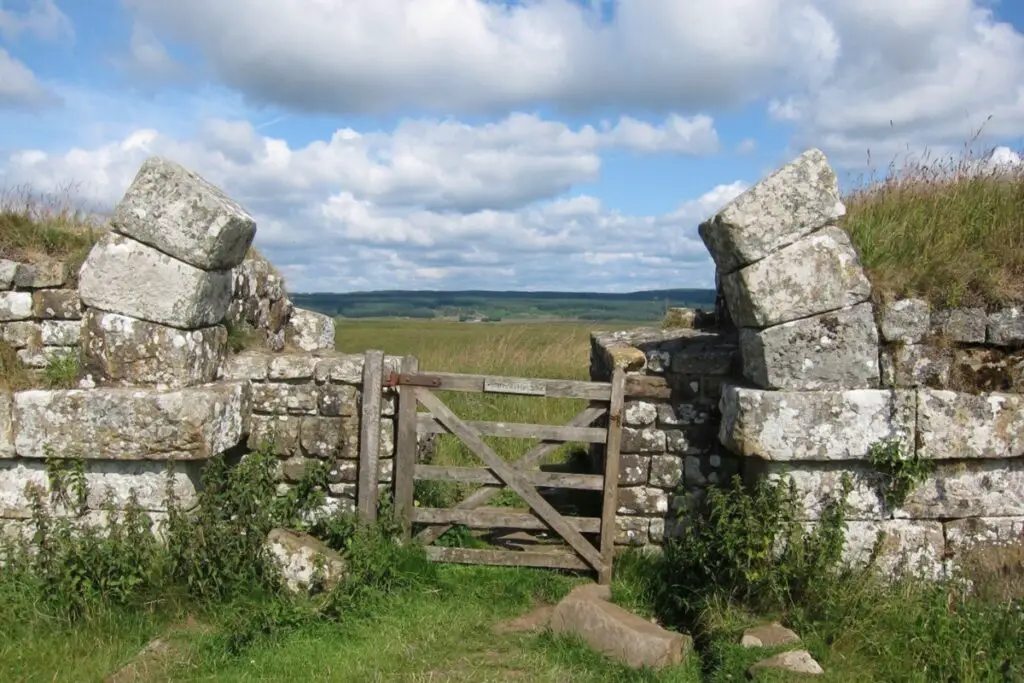
Roman roads were famously straight and surveyors aimed to find the most direct path possible. This often meant they erected bridges or causeways over water, drained marshes, cut through mountains, and filled valleys. However, they bent roads around difficult terrain when it was necessary. Straight well-built roads meant faster and more efficient transport and information.
Though the original names of these Roman roads are unknown, three of the longest roads in Britain were:
- Watling Street – 444 km (276 miles) from Dover in the southeast to Wroxeter, near Shrewsbury in the northwest of England.
- Ermine Street – 311 km (193 miles) from London in the southeast to York in the north of England, and
- The Fosse Way – 370 km (230 miles) from Exeter in the southwest to Lincoln in the northeast of England.
The growing network of roads around Britain meant rest stops and inns for traders and travellers were needed. The inns provided accommodation, meals, stables, and often, bathhouses. They were also used to house troops who patrolled the roads ensuring the safety and identity of the travellers.
The Romans gave messengers a mutatio (change), or service station, where they could change their horses every few miles. This allowed them to reach a full gallop and reduce the journey from days to hours.
Legacy of Roman Roads of England
The Roman roads of England have had a lasting impact on the country’s landscape and urban geography, as well as on its economy and culture. Their legacy is still visible in the forts, villas, and walls built around them and in the cities they connected that have grown and prospered.
The Impact of Romans Building Roads in England.
When the Romans abandoned Britain in the 5th century, they left behind them a far more sophisticated network of roads than the one they had encountered 400 years earlier. Many of the Roman roads connected important Celtic settlements such as Colchester and Ilchester and soon became significant towns for the Romans. Due to its location on the Thames River and its proximity to major ports, London (Londinium) became the capital of Britannia, a status it has kept.
The Influence on Modern Road Networks.
Building the Roman roads required advanced engineering techniques which influenced future road-building projects. Even though many of the roads fell into disrepair, others continued to be used as paths long after the Roman era. A few even remain an important part of Britain’s transportation infrastructure today. Several of England’s major highways follow the original roads laid down by the Romans, such as parts of Watling Street, Fosse Way, Ermine Street, and Icknield Way.
The Roman Contribution to England’s Cultural Heritage.
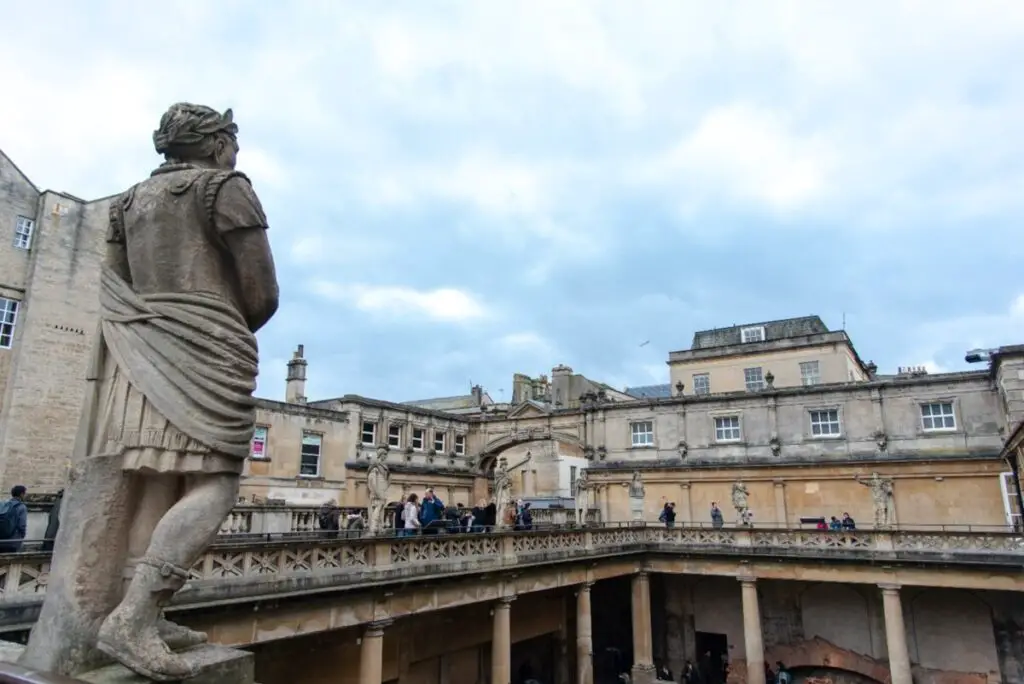
The Romans left an enduring mark on England’s cultural heritage, with their contributions still seen today. While many of the Roman roads that once spanned the country have been lost, the Roman Empire’s historical and archaeological legacy remains alive and well. Cities such as Cirencester, Bath, and Chester still bear the unmistakable imprint of the Roman Empire, and countless ruins and artefacts dot the countryside.
One of the most impressive remains is Hadrian’s Wall, a 73-mile-long fortification that stretches from England’s east to west coast.
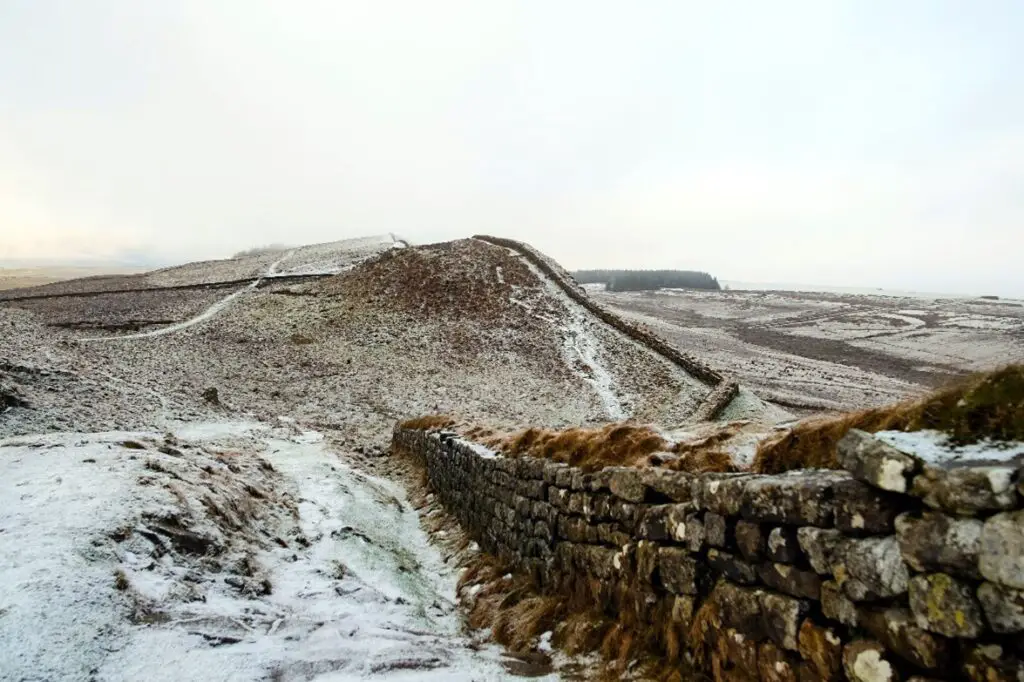
The influence of the Romans can also be seen in the names of many English towns and cities. Names ending in -caster, -chester, or -cester (meaning “military camp” in Latin) are a tell-tale sign of Roman origins, as are places starting with Car- and Caer- (such as Carlisle). If two places have Roman names, there’s a good chance a Roman road linked them.
After the Romans, there were no roads of comparable quality built in Britain until the early 18th century. To manage a national road system, a centralised authority is essential, and only the Romans were capable of this until the Ministry of Transport was formed in the early 20th century.
Final Thoughts

The Roman roads of England stand as a testament to the power and influence of the ancient Roman Empire. The roads connected cities and military bases, facilitated trade and commerce, and eased the movement of goods and people. All while serving as a symbol of Roman rule and control.
But even though the Roman Empire crumbled and faded into history, the impact of Roman roads has lived on. It has influenced modern road networks, captivated historians and archaeologists, and enriched England’s cultural heritage.
The Roman roads of England are a story of conquest and commerce, of engineering prowess and cultural legacy. The ancient structures are a reminder of the lessons they taught, the ambitions and the motivations of a powerful empire.
They are also a reminder of the lasting impact that great civilisations have upon the world.
FAQs
Q: Who built the Roman roads of England?
A: The Roman roads of England were built by Romans after they conquered and colonised Britain.
Q: What was the purpose of the Romans building roads in England?
A: The Roman roads served multiple purposes in England, including connecting Roman cities and military bases, facilitating trade and commerce, and strengthening the Roman Empire’s grip on the country.
Q: How were the Roman roads constructed?
A: The Roman roads were constructed using advanced engineering techniques and were built with local materials and labour. The road network was extensive and complex, stretching across England to connect different regions.
Q: What was the lasting impact of the Roman roads in England?
A: The Roman roads have had a lasting impact on England, influencing modern road networks, providing valuable information for historians and archaeologists, and contributing to the country’s cultural heritage.
Q: Why is it important to study the Roman roads of England?
A: Studying the Roman roads of England is important because they provide insights into the Roman Empire’s ambitions, motivations, and methods of conquest and control. The roads also offer a window into England’s history and heritage, highlighting the country’s role in the ancient world and the lasting impact of the Roman Empire.

